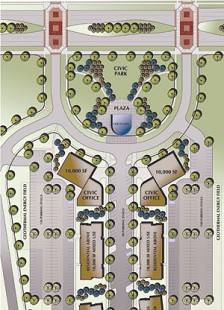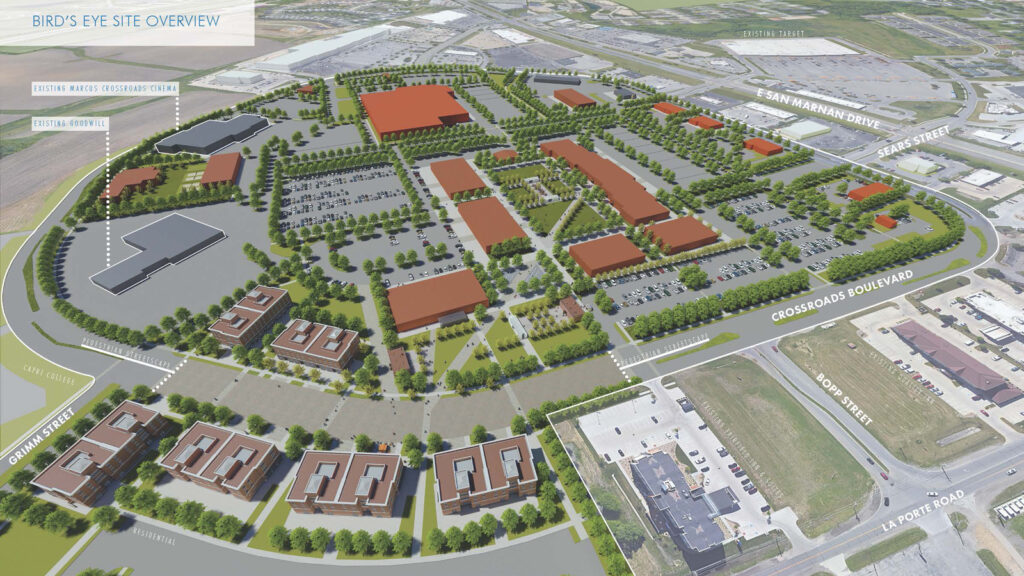Small town, big ideas

Architect William Ludwig has seen it before – a small town at the starting line of the future.
In this case, the town that has Ludwig’s attention is Cumming, a community in northwest Warren County whose name was derived from a promise of progress in the late 19th century. It followed growth about as far as a railroad line could take it into the 20th century.
These days, Ludwig is telling the community that its best days are ahead of it.
“When the economy changes, we’re going to be in good shape,” said Tom Becker, a cabinetmaker and history buff who is serving his second stint as mayor.
For the last two years, Ludwig’s firm, William J. Ludwig & Associates Ltd., has circulated plans among city officials, business leaders, developers and citizens that anticipate dramatic growth for a community whose population doubled to 351 during the last decade, according to the U.S. Census Bureau, due in large part to residential development on the east side of town.
That growth has helped kick up the tax receipts to a little more than $230,000, according to the 2012 Cumming budget. Real growth, the kind that generates tax dollars for infrastructure, parks and other amenities, comes from commercial development.
Ludwig has laid out $6 million in infrastructure improvements. The first phase of an estimated $1.5 million project to run sewer lines through Cumming to the interchange of Interstate 80 and Warren County Highway G-14 is nearing completion, and it is arriving under budget.
Des Moines Water Works has proposed $2 million in improvements to water service.
“Sewer primes the pump” of development, said Scott Shelley, a member of the Cumming Planning and Zoning Committee and co-owner with his brother, Skip, of S & S Specialties, a business that moved to Cumming in 1992 from West Des Moines. Skip Shelley is a member of the city council and former director of the planning and zoning committee.
The brothers are exuberant supporters of development plans.
Cumming has been pressed into action in part because it lost an annexation battle with West Des Moines in 2009. The dispute left bitter feelings among some Cumming residents. Skip Shelley said that the town of Orilla, located a couple of miles northwest of Cumming, will lose its identity after being absorbed into West Des Moines.
Becker said the annexation fight was one his town was bound to lose.
“You can’t beat Goliath, except in the biblical sense,” he said.
Becker and Skip Shelley credit former Mayor Jim Gifford with laying much of the groundwork that has modernized local government in anticipation of the city’s need to grow.
“He pressed for the creation of boards and commissions,” Shelley said. “We had a comprehensive plan in 2006. He got everyone motivated to move forward.”
Any forward motion needs to follow a plan and proceed with caution.
Ted Lare is a landscape architect who brought his business, Ted Lare Design Build, to Cumming in 1982. He is the current director of the planning and zoning committee. He is eager to watch his little town grow, but he is approaching development with mixed emotions.
It is safe to say that Lare’s business, which provides design and nursery services, was the first million-dollar development, occupying more than 200 acres of what was once an apple orchard. He also operates in the community’s only tax increment financing district.
He wanted a say in how Cumming would develop, and he doesn’t like the idea of seeing the town swallowed whole by another municipality.
“Our intent was to have something to say about developing our own area rather than being told by other municipalities what to do,” Lare said. “We brought in Ludwig – he’s kind of like Des Moines’ best-kept secret. Nobody really knows that he’s had a hand in these small communities growing and developing. Ludwig’s firm has been very helpful to us because in our mecca we have people who are pro-development, and we have people who don’t want to see things change, and there is part of me that feels the same way.”
Ludwig has been around the development block in Greater Des Moines and the state.
He was the master planner of Green Meadows and Birchwood Crossing in Johnston, Copper Creek and Edgewater in Pleasant Hill, Venbury and North Point in Altoona, and Legacy Orchard Hills and Echo Valley in Norwalk. West Des Moines is dotted with his projects, including Glen Oaks. He is the planner behind a development boom occurring in Indianola.
Ludwig is following a process that begins with getting city leaders to think in present and future tense at the same time.
Images of large construction equipment moving dirt and digging trenches are encouraging signs of progress. That sewer line is ever important.
There are rumblings that the Iowa Department of Transportation plans to enlarge the Interstate 80 interchange on the west side of town in the next two to three years. That could lead to development that would help boost the tax base.
Knapp Properties Inc. owns about 150 acres at the northeast corner of I-80 and G-14, also called Cumming Avenue. Knapp is keeping its development options open, said Gerry Neugent, the company’s president and chief operating officer.
“We think that maybe some type of highway commercial would work. Possibly some residential and business uses. They’d like to see some flex business,” Neugent said. “It’s just highly conceptual right now.”
There is plenty of development ground near what is called “old town” Cumming, a three-block-wide strip of businesses and homes that grew up along the former Chicago Great Western Railway line. The town was founded in 1888 after those tracks were in place. For commerce, the city had two general stores, a drugstore, a hardware store, a lumberyard, a barber shop, an elevator, stockyards and the train depot. In later years, it had a tall grain bin called Big Charlie.
In addition to agriculture, coal mining fed the local economy, according to the “History of Warren County, Iowa,” which was published in 1987 by the Warren County Genealogical Society.
The population boom between 2000 and 2010 marks the first significant growth since the town was founded.
As the story goes, Cumming got its name during the construction of the first home on Main Street. When the locals would gather to watch the construction, they would ask the builder: “How are you doing with your town?” His reply: “It’s coming.”
From that modest beginning, Ludwig is proposing four development centers with parks and a link to the old rail line, now a popular bicycle route called the Great Western Trail.
In coming months, he hopes to lay out plans for all of the town’s residents to see.
“I like working with small towns and an area I think is going to expand,” Ludwig said. “It doesn’t take rocket science to know something is going to happen in Cumming.”











